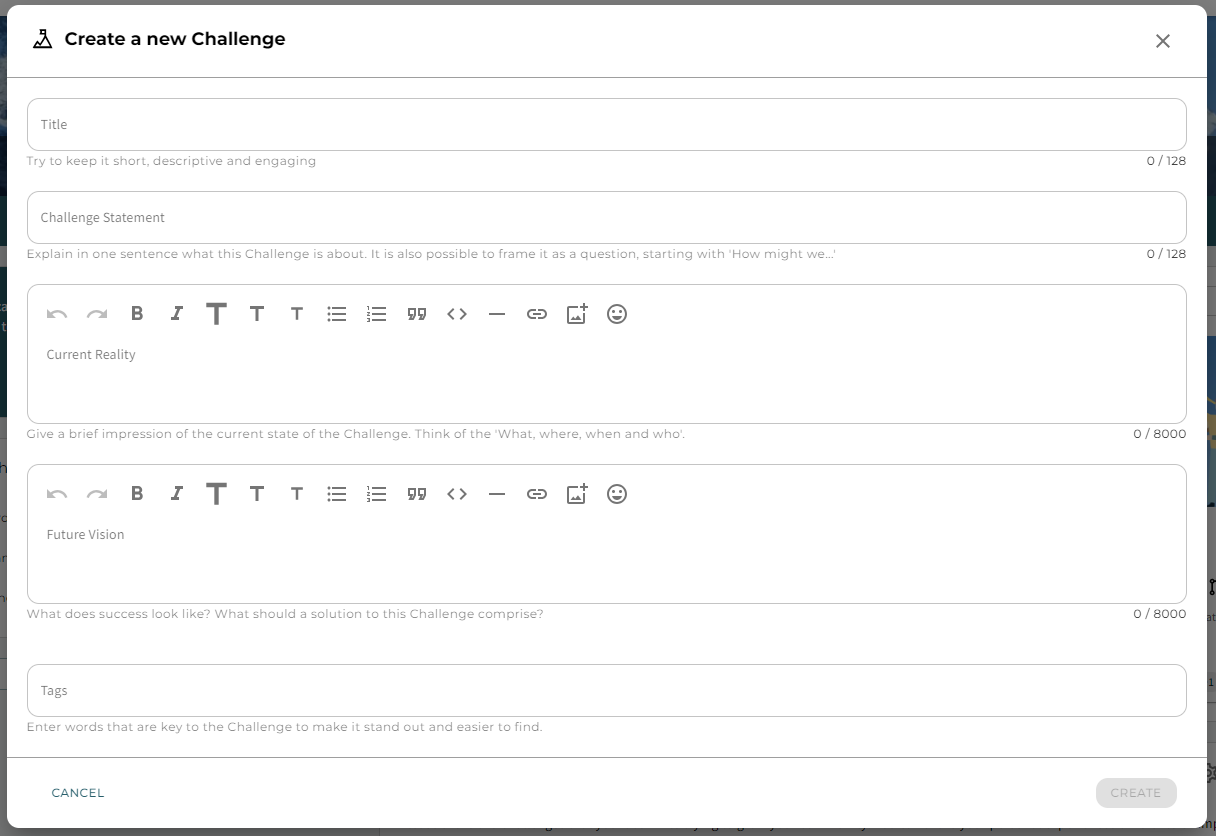How to get started with my Subspaces
The platform allows you to bring the community, the challenges and knowledge together in one Space. Sometimes you may want to gather your subprojects or other challenges bottom-up after opening your Space, sometimes you already have a set of projects that a (sub-)community is working on. Whether you are working on big or small, on environmental or societal, on global, regional or local levels, it is all possible. Key is that together with the community you can create alignment: where are we now and where do we want to go? Even though we don’t know the solution yet, we avoid duplication of efforts and inefficient use of resources.
Creating a Subspace
Whether or not you are able to create a new Subspace, depends your role and the choices made by the leads of the Space. They can decide whether or not any member can open a Subspace or if they want to be able to control the set of Subspaces being worked on.
If you have the right privileges, you can find the create button on the Subspaces page. You will be first asked some questions about to describe the Subspace. Even though you may not know how exactly to solve whatever it is you are working on, you can identify a direction or a few elements that should be taken into account. That is why we ask you, besides the title and challenge statement, to describe the current reality and the future vision. You can further add tags to make your Subspace easier to find for interested stakeholders. This is just a first pass, and can (and probably should) always be adjusted and extended as you continue to work on it.
Settings of a Subspace
Again, the Subspace has a set of standard settings similar to the Space set up explained in this Support Page: profile, context, community, and updates. They allow you to fill in the basic information, visuals, manage the community roles and send updates.
Furthermore the authorization settings allow you to define who will be the admins, but also what the members of this Subspace can do. Also, you can choose to make this specific Subspace private (non-members are not allowed to read the contents of the Subspace). There might be situations where you want to restrict the access to the information in the Subspace due to privacy issues, or when you first want to work on the Subspace in a smaller team.
Subspaces can also have, you guessed it, smaller Subspaces. Sometimes you need more than one layer to your work, so you can organize the work of a Subspace into other smaller Subspaces underneath. You can add and manage the identified ideas or directions towards a solution for (part of) the upper Subspace, or for the Space. A team of members can then deepen their understanding of the possibility to turn it into action. How can it impact the project? How can we realize it? What resources are needed?
Last but not least, each Subspace has an Innovation Flow. This flow can be used, and chosen by the leads, to guide the community through the innovation process. It visualizes the various steps that have to be taken to go from start to end. You can think of Design Thinking Flows or an agreed innovation process defined by your organization. By moving to the next innovation flow state, you can communicate the process with your members.
Populating a Subspace
To further populate your Subspace and get your community active, make the Dashboard engaging with some updates, interesting recommendations, and references. Also, use the visuals and emoticons to give the page more colour. Then start adding collaboration tools on the Contribute tab. What are the set of questions that your community can answer, what knowledge and resources do you need, who else should be involved?
Coordination Subspace
Very often we see that there are a few leads or core team driving, managing and activating the Space. These members want to coordinate with each other for example what the next steps of the Space are, what collaboration tools they want to add, capturing meetings notes and brainstorm boards.
That is why we often see communities that open a private Coordination Subspace as a sub-community for this process.
Let’s get started
Hopefully this guide has helped you with understanding the possibilities of opening a Subspace in your Space. You can always find further guidance on our support page or contact us directly.
